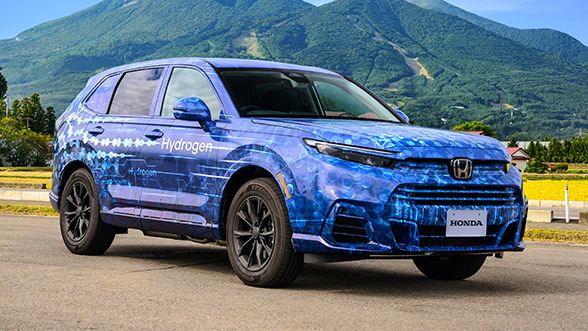For some time now, the automotive world has been abuzz with anticipation regarding Honda’s venture into hydrogen-powered vehicles, particularly focusing on the CR-V compact SUV. Now, the veil has been lifted, and the new CR-V Fuel Cell Electric Vehicle (FCEV) slated for release in the U.S. later this year has been unveiled.
As expected, the CR-V FCEV maintains the familiar silhouette of its predecessors, albeit with some notable distinctions in its front-end design. The grille shape and lower fascia have been subtly altered, accompanied by revised headlights, marking the discernible differences.
Beneath its exterior, the CR-V FCEV deviates significantly from both its hybrid and non-hybrid counterparts currently available. It will be powered by a fuel cell unit, which ingeniously converts liquid hydrogen fuel into electricity to drive an electric motor.
What sets it apart from other hydrogen-powered vehicles, such as the Toyota Mirai and Hyundai Nexo, is its plug-in capability.

This innovative feature allows users to conveniently plug in the CR-V to charge a small battery pack, which in turn supplements power to the electric motor. Though specific details regarding the extent of this electric range augmentation are yet to be disclosed, Honda is expected to unveil these specifications soon.
The CR-V’s fuel cell power unit is being meticulously crafted in Michigan as part of a collaborative effort between Honda and General Motors.
With production already underway, the CR-V FCEV is poised to hit the market later this year. However, the sales strategy, whether through leasing arrangements or direct retail, remains uncertain at this juncture.
Furthermore, it is anticipated that the vehicle will predominantly be available in California, given its status as the sole state equipped with a functional hydrogen fueling infrastructure.
